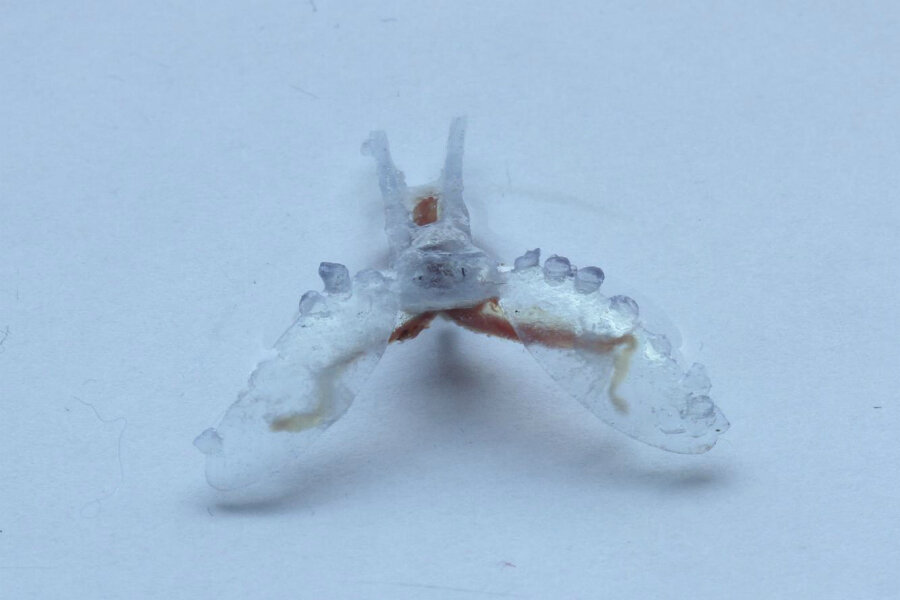Slo-mo bot: How scientists built a biohybrid robot from slug parts
Loading...
Scientists have developed what may be the slowest first responder ever.
On Monday, researchers from Case Western Reserve University unveiled a "biohybrid" robot powered by sea slug muscles. The device, researchers say, could perform tasks that are difficult for traditional robots, and even take on search missions.
“We’re building a living machine – a biohybrid robot that's not completely organic, yet,” said Victoria Webster, a PhD candidate who led the research, in a statement.
Biorobotic philosophies – including, but not limited to the notion that “living machines” could perform tasks that aren’t possible for organic organisms or totally man-made devices – have inspired new lines of research in many fields. Earlier this month, the US Navy invested $750,000 in the development of cyborg locusts that could sniff out bombs. In February, researchers developed a search-and-rescue robot modeled after the cockroach.
Ms. Webster and her colleagues developed the robot by using facial muscles from California sea slug, Aplysia californica, to power a 3D-printed body. The 2-inch-long bot can crawl about 10 inches per hour. Sluggish, even for a slug.
Why a sea slug?
A. californica isn’t just another squishy bottom-dweller – it’s also a remarkably durable and adaptable animal. Strong Pacific tides pull them between deep waters and shallow pools, so the slugs must be able to survive both. As a result, California sea slugs can endure considerable changes in temperature, pressure, or salinity – conditions that could stop a man-made robot in its tracks.
Originally, researchers tried using muscle cells to power their device. But ultimately, they found that the network of mouth muscles, known as the buccal mass, functioned more powerfully as a unit. When stimulated by an external electrical current, the muscles contract, pulling the robot’s synthetic body along.
“When we integrate the muscle with its natural biological structure, it’s hundreds to a thousand times better,” said co-author Ozan Akkus, a professor of mechanical and aerospace engineering at Case Western, in a statement.
But that’s just one advantage of biological tissue over tech. Muscle cells allow biohybrids to pull energy from natural sources – perfect for long search missions, which quickly drain the batteries of traditional robots.
The robot’s organic components also make it biodegradable and cheaper to produce. Researchers could deploy a swarm of bots without worrying about recovery when the job is done.
Webster’s slugbot doesn’t do much now besides aimlessly crawl, but it could someday identify toxic leaks or (slowly) scour the ocean floor for lost black box recorders. In future studies, researchers will attempt to develop a control mechanism, possibly using the sea slug’s nerves and neurons.






